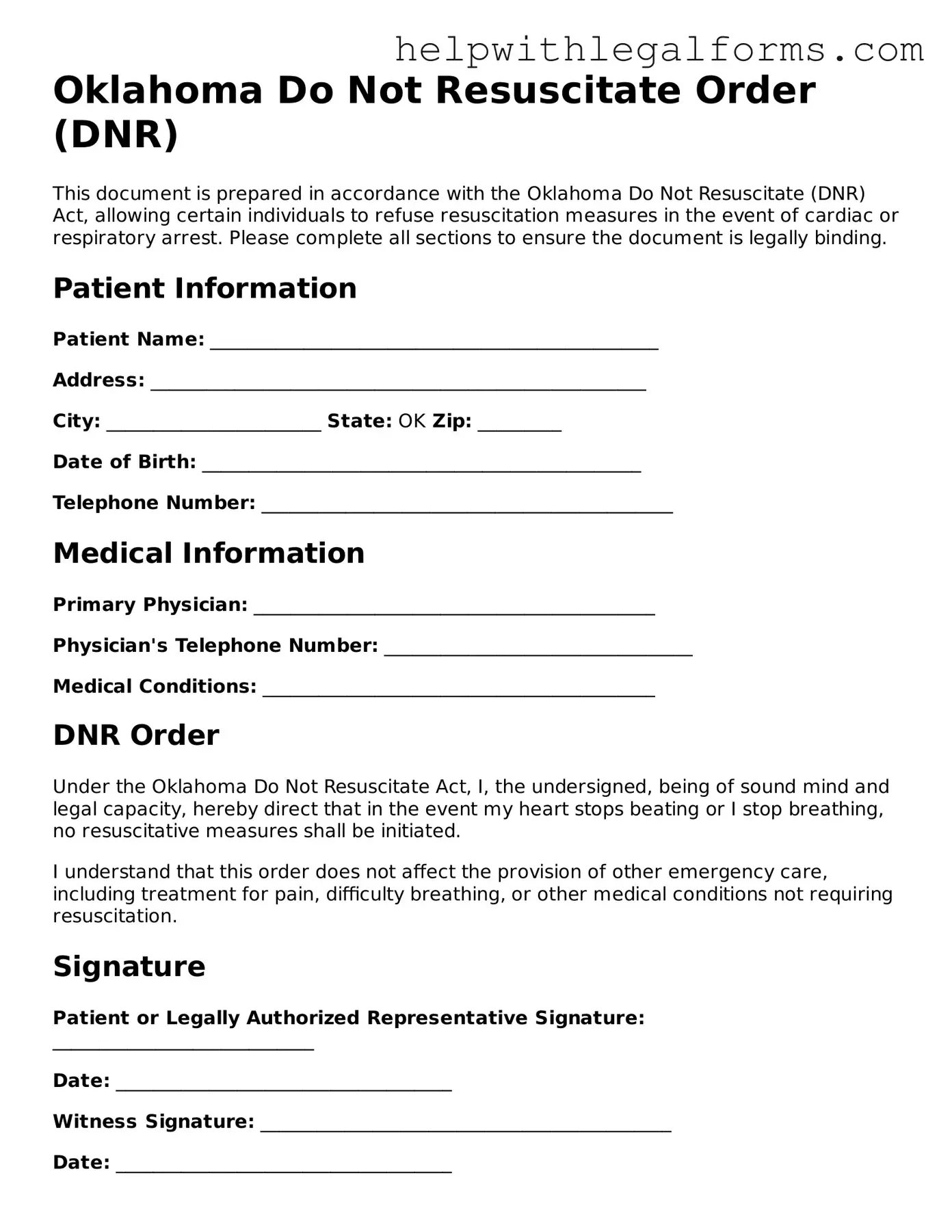Oklahoma Do Not Resuscitate Order (DNR)
This document is prepared in accordance with the Oklahoma Do Not Resuscitate (DNR) Act, allowing certain individuals to refuse resuscitation measures in the event of cardiac or respiratory arrest. Please complete all sections to ensure the document is legally binding.
Patient Information
Patient Name: ________________________________________________
Address: _____________________________________________________
City: _______________________ State: OK Zip: _________
Date of Birth: _______________________________________________
Telephone Number: ____________________________________________
Medical Information
Primary Physician: ___________________________________________
Physician's Telephone Number: _________________________________
Medical Conditions: __________________________________________
DNR Order
Under the Oklahoma Do Not Resuscitate Act, I, the undersigned, being of sound mind and legal capacity, hereby direct that in the event my heart stops beating or I stop breathing, no resuscitative measures shall be initiated.
I understand that this order does not affect the provision of other emergency care, including treatment for pain, difficulty breathing, or other medical conditions not requiring resuscitation.
Signature
Patient or Legally Authorized Representative Signature: ____________________________
Date: ____________________________________
Witness Signature: ____________________________________________
Date: ____________________________________
Physician's Verification
I, the undersigned physician, affirm that I have discussed the nature and consequences of a Do Not Resuscitate (DNR) order with the patient or the patient's legally authorized representative. I affirm that the patient or their representative fully understands that this request means no attempt will be made to resuscitate the patient in the event of cardiac or respiratory arrest.
Physician's Signature: _________________________________________
Date: ____________________________________
Instructions for Use
This completed and signed document should be provided to all healthcare providers, including hospital staff and emergency medical services, to ensure it is followed. It is recommended that the patient or their representative discuss this document with their primary healthcare provider.
Keep this document in an easily accessible location and consider informing close family members or caregivers of its existence and location.
